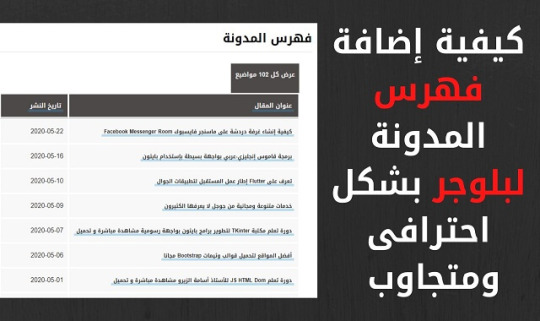#PostLabel
Explore tagged Tumblr posts
Text
#BloggerTips#BloggingExpert#BloggerLabels#PostLabel#BloggerTricks#AddLabels#BlogspotSEO#BloggerSetup#LabelsInBlogger#SEOForBlogger#BloggingTutorial#BlogspotTips#BloggerWidgets#BloggingGuide#BlogPostLabel#OrganizePosts#NewBloggerWebsite#SEOOptimization#BloggerHelp#BloggerExpertTips
0 notes
Text


Went to Pride today with a lot of my partners! It was cozy. I had the opportunity to draw a badge and have it laminated, so I made the badge on the right. It says HAN which means "HE" in my native language. I don't use he exclusively, but today that definitely felt very right. I tried to write it in a way that reference the schizo symbol.
That made me think of my first Pride with one of the partners I went with today, about 8 or 9 years ago. When I met them I wasn't sure about many things and I didn't feel comfortable claiming most labels.
They had made two shirts. Queer Alien #1 and Queer Alien #2.
I think theirs said !bi ace !trans !autistic
My corresponding shirt said 'pan ace', 'questioning' and 'neurodivergent'.
I guess in today's climate/mental space for me I'm moving towards a postlabels worldview. But in 2015/16 this was an incredible gesture, just them going "well look I know you don't know exactly what's going on, but you're clearly questioning your gender. And sure you're not diagnosed, but you can't in all honesty tell me that you think that you're neurotypical".
For someone who had a huge imposter syndrome this was truly liberating and very touching. It was an important step for me to legitimise a way of thinking about myself that would lead me to become happier, healthier and more free.
There were a lot of very very cool young queer people at Pride today. People in their early twenties, often far into their physical transitions, long since post-op, or just clearly in their element with body mods and hair and style and confidence that I couldn't have dreamed of at that age.
I'm so fucking happy for them. I don't know if I will ever be that liberated. But I'm working on it, and every year I get a step closer to owning my autonomy. Every year I get a step closer to trusting myself. Every year I feel that much more comfortable in my own skin.
Some of us are slow to mature, slow to leave our ill-fitting assigned holes, scared to claim new space and grow into our shape for years and years. And sometimes part of what it takes is for someone to look at our stumbling, careful, tactful investigations and acknowledge that certainly they can't tell you what exact shape you are either, but you sure ain't a square, and it might be time to stop trying to fit into the square hole.
27 notes
·
View notes
Photo

Excited to share this item from my #etsy shop: Happy Post Labels, Stickers #stickeraddiction #handmadestickers #businesslabels #postlabels #happypost https://etsy.me/2SCgjlL #thecraftingwell #thecraftingwellstore #shopsmallbusiness #shoplocal #startupbusiness #weloveourjob #etsyshop (at Doncaster) https://www.instagram.com/p/BuelxKdlQaq/?utm_source=ig_tumblr_share&igshid=131h8efsrw1ya
#etsy#stickeraddiction#handmadestickers#businesslabels#postlabels#happypost#thecraftingwell#thecraftingwellstore#shopsmallbusiness#shoplocal#startupbusiness#weloveourjob#etsyshop
0 notes
Text
كيفية إضافة فهرس المدونة لبلوجر بشكل احترافى ومتجاوب 2020 | نبذة 101
كيفية اضافة فهرس لمدونة بلوجر
اذا كان لديك مدونة بلوجر فانت بالطبع تجتاج الى فهرس للمدونة يعمل على تنظيمها وتنسيق مقالاتها، اليوم اتيت لكم بكود بسيط جدا يتمثل في إنشاء صفحة Sitemap خاصة بموقعكم و تعرض فيه مواضيع الموقع كاملة مع التصنيف و تاريخ نشر المقال فهى من اهم الصفحات على موقعك حيث يمكن للزائر التنقل بين كل مشاركاتك من خلال فهرس المدونة فقط ومعرفة كل المشاركات الخاصة بموقعك منذ انشائه.

يمكنك معاينة الاضافة من هنا
معاينة فهرس المدونة
و الآن ياتى دور تركيب الاضافة بخطوة واحدة:
1 - أدخل للوحة تحكم المدونة >> الصفحات >> صفحة جديدة وسميها الفهرس >> إختر التبويب HTML
2 - إنسخ و آلصق الكود التالي داخل محرر HTML:
#bp_toc { background: #FFFFFF; border: 0 solid #000000; margin-top: 10px; padding: 10px 0; width: 100%; } h3.bp_toc_title { font-size: 28px; line-height: 30px; padding-top: 40px; margin: 0 0 20px; } #bp_tocm { margin-right: 30px; } #bp_toc a { text-decoration: none !important; } #bp_toc a:hover { text-decoration: underline !important; } .toc-header-col1, .toc-header-col2, .toc-header-col3 { background: #4e4949; border-bottom: 5px solid #dfdfdf; padding: 10px; width: 50%; } .toc-entry-col2 { border-left: 2px solid #FFFFFF; border-right: 2px solid #FFFFFF; } .toc-header-col2 { border-left: 2px solid #FFFFFF; border-right: 2px solid #FFFFFF; width: 15%; } .toc-header-col3 { width: 35%; } .toc-header-col1 a:link, .toc-header-col1 a:visited, .toc-header-col2 a:link, .toc-header-col2 a:visited, .toc-header-col3 a:link, .toc-header-col3 a:visited { color: #EBEBEB; font-size: 14px; font-style: normal; font-weight: bold; line-height: 1.4em; text-decoration: none; border-collapse: separate; } .toc-header-col1 a:hover, .toc-header-col2 a:hover, .toc-header-col3 a:hover { text-decoration: underline; } .toc-entry-col1, .toc-entry-col2, .toc-entry-col3 { background: #F8F8F8; border-bottom: 2px solid #FFFFFF; padding: 10px; } .toc-entry-col2 { border-left: 2px solid #FFFFFF; border-right: 2px solid #FFFFFF; } .toc-entry-col1 a, .toc-entry-col2 a, .toc-entry-col3 a { color: #45818E; font-family: 'Verdana',Arial,sans-serif; font-size: 12px; } .toc-note { background-color: #4e4949; color: #EBEBEB; display: inline-block; font-size: 14px; padding: 10px; text-align: center; font-weight: 600; text-transform: uppercase; border-bottom: 1px solid #dfdfdf; }
//<![CDATA[ var postTitle=[],postUrl=[],postDate=[],postSum=[],postLabels=[],sortBy="datenewest",tocLoaded=!1,numChars=250,postFilter="",tocdiv=document.getElementById("bp_toc"),totalEntires=0,totalPosts=0; function loadtoc(c){if("entry"in c.feed){var d=c.feed.entry.length;totalEntires+=d;totalPosts=c.feed.openSearch$totalResults.$t;if(totalPosts>totalEntires){var b=document.createElement("script"); b.type="text/javascript";startindex=totalEntires+1;b.setAttribute("src","/feeds/posts/summary?start-index="+startindex+"&max-results=500&alt=json-in-script&callback=loadtoc"); tocdiv.appendChild(b)}for(b=0;b<d;b++){for(var a=c.feed.entry[b],e=a.title.$t,k=a.published.$t.substring(0,10),l,f=0;f<a.link.length;f++)if("alternate"== a.link[f].rel){l=a.link[f].href;break} var g="content"in a?a.content.$t:"summary"in a?a.summary.$t:"",g=g.replace(/<\S[^>]*>/g,"");if(g.length>numChars)var g=g.substring(0,numChars),h=g.lastIndexOf(" "),g=g.substring(0,h)+"...";h=""; if("category"in a){for(f=0;f<a.category.length;f++)h+="<a href=\"javascript:filterPosts('"+a.category[f].term+"');\" title=\"Click here to select all posts with label '"+a.category[f].term+"'\">"+a.category[f].term+", "; a=h.lastIndexOf(",");-1!=a&&(h=h.substring(0, a))}postTitle.push(e);postDate.push(k);postUrl.push(l);postSum.push(g);postLabels.push(h)}}totalEntires==totalPosts&&(tocLoaded=!0,showToc());sortPosts(sortBy);tocLoaded=!0} function filterPosts(c){postFilter=c;displayToc(postFilter)}function allPosts(){postFilter="";displayToc(postFilter)} function sortPosts(c){function d(a,b){var c=postTitle[a];postTitle[a]=postTitle[b];postTitle[b]=c;c=postDate[a]; postDate[a]=postDate[b];postDate[b]=c;c=postUrl[a];postUrl[a]=postUrl[b];postUrl[b]=c;c=postSum[a];postSum[a]=postSum[b];postSum[b]=c;c=postLabels[a];postLabels[a]=postLabels[b];postLabels[b]=c}for(var b=0;b<postTitle.length-1;b++)for(var a=b+1; a<postTitle.length;a++)"titleasc"==c&&postTitle[b]>postTitle[a]&&d(b,a),"titledesc"==c&&postTitle[b]<postTitle[a]&&d(b,a),"dateoldest"==c&&postDate[b]> postDate[a]&&d(b,a),"datenewest"==c&&postDate[b]<postDate[a]&&d(b,a)} function displayToc(c) {var d=0,b,a="Click to sort by title",e="Click to sort by date",k="";"titleasc"==sortBy&&(a+=" (descending)",e+=" (newest first)");"titledesc"==sortBy&&(a+=" (ascending)",e+=" (newest first)");"dateoldest"==sortBy&&(a+=" (ascending)",e+=" (newest first)"); "datenewest"==sortBy&&(a+=" (ascending)",e+=" (oldest first)");""!=postFilter&&(k="Click to show all posts");b="<table><tr>";b+='<td class="toc-header-col1">';b+='<a href="javascript:toggleTitleSort();" title="'+a+'">عنوان المقال'; b+="";b+='<td class="toc-header-col2">';b+='<a href="javascript:toggleDateSort();" title="'+e+'">تاريخ النشر';b+="";b+='<td class="toc-header-col3">';b+='<a href="javascript:allPosts();" title="'+k+'">التصنيف';b+="";b+=""; for(a=0;a<postTitle.length;a++)""==c?(b+='<tr><td class="toc-entry-col1"><a href="'+postUrl[a]+'" title="'+postSum[a]+'">'+postTitle[a]+'<td class="toc-entry-col2">'+postDate[a]+'<td class="toc-entry-col3">'+postLabels[a]+"",d++): (z=postLabels[a].lastIndexOf(c),-1!=z&&(b+='<tr><td class="toc-entry-col1"><a href="'+postUrl[a]+'" title="'+postSum[a]+'">'+postTitle[a]+'<td class="toc-entry-col2">'+postDate[a]+'<td class="toc-entry-col3">'+postLabels[a]+"",d++)); b+="";c=d==postTitle.length?'<div class="toc-note">عرض كل '+postTitle.length+" مواضيع
":'
عرض '+d+" موضوع بتصنيف '"+(postFilter+"' من "+postTitle.length+" مجموع المواضيع
"); tocdiv.innerHTML= c+b}function toggleTitleSort(){sortBy="titleasc"==sortBy?"titledesc":"titleasc";sortPosts(sortBy);displayToc(postFilter)}function toggleDateSort(){sortBy="datenewest"==sortBy?"dateoldest":"datenewest";sortPosts(sortBy); displayToc(postFilter)}function showToc(){tocLoaded?(displayToc(postFilter),document.getElementById("toclink")):alert("Just wait... TOC is loading")} function hideToc(){document.getElementById("toc").innerHTML=""; document.getElementById("toclink").innerHTML='\u00bb Show Table of Contents

'}; //]]>
ثم إمنع ظهور التعليقات و إنشر الصفحة و ومبروك عليك بقى عندك فهرس مدونة جميل جدا. .
لو لقيت الاضافة دى مناسبة ليك واستفدت من الموقع ولو بمعلومة ؟! ، فقم بمشاركتها مع اصدقائك و اترك لنا تجربتك مع التطبيق الذي يناسبك فى التعليقات
كل تطبيقات وبرامج موقع نبذة 101 مجانية بروابط تحميل مباشرة من ميديا فاير مباشر
ادعمنا من فضلك ولو بكلمة ( شكرا ) تكفى
from Blogger https://ift.tt/3etTsnW via IFTTT
0 notes
Text
DNA Damage and Lung Cancer Risk in Tobacco Smokers- Juniper Publishers

Abstract
Purpose: Lung cancer is currently the leading cause of cancer death in the world. Although the rates of lung cancer mortality have started to decrease in most industrialized countries, the long time lag between the peak of cigarette consumption and lung cancer development will assure a long life for the epidemic. We reviewed the four epidemiological studies that have examined the dose-response relationship of polycyclic aromatic hydrocarbons (PAH)-related DNA adducts with lung cancer using 32P-postlabeling by pooled- or meta-analytic approach. Our purpose was to evaluate if the presence of high levels of PAH-related adducts in peripheral blood are associated with increased risk of lung cancer in tobacco smokers.
Results: Meta-analyses of case-control and cohort studies with a final data set containing data for 1,028 lung, oral and bladder cancer patients and 1,084 controls showed higher frequency of DNA damage in smokers in respect to referents. When only lung cancer was considered, smokers were having 79% (95% Confidence Interval 0.33-1.25) higher levels of PAH-related adducts as compared to controls. Pooled and metaanalysis of longitudinal prospective studies, were the measurement of adducts was performed in peripheral blood that was collected years before cancer onset, confirmed that the production of PAH-related DNA adducts was associated with lung cancer in smokers with an overall estimate of 34% increase as compared to referents (95% Confidence Interval 1.10-1.64).
Conclusion: Pooled and meta-analysis indicate that smokers with greater levels of DNA damage have increased risk of lung cancer. In prospective longitudinal studies, the overall excess of adducts in smokers with lung cancer in respect to controls supports the value of adducts as a predictive biomarker, that might be used to select high risk subjects for cancer screening programs.
Keywords: DNA adducts; Lung cancer; Risk
Introduction
Lung cancer is currently the leading cause of cancer death in the world [1]. In the past century, lung cancer was extremely rare and represented 2,3] , whereas becomes the leading cause of cancer death in out rime [1]. During the last decades, the role of tobacco smoking in lung cancer etiology has accumulated [4,5]. Although the rates of lung cancer mortality have started to decrease in Western countries [1], smoking attributable deaths are even projected to increase due to the surge in tobacco consumption among young people [6]. The low-dose computed tomography screening, along with smoking cessation programmes, appears to be one of the potentially most useful strategies able to improve the current poor survival associated with lung cancer [7]. Nevertheless, additional efforts for early detection of lung cancer, in particular, molecular biomarkers are still necessary, which may improve the selection of individuals for screening programs [8].
Tobacco smoke contains more than 3,500 chemicals [4], of which 73 tumor-initiating carcinogens either in humans and animal models, including some polycyclic aromatic hydrocarbons (PAHs) [4], compounds capable to bind DNA covalently, inducing PAH-related DNA adducts [9-11]. DNA adducts, if unrepaired, may lead to mutations in tumor suppressors and oncogenes [12]. PAH-related DNA adducts represent an integrated biomarker of environmental exposure to carcinogenetic compounds [13-15], and reflect the capability of each individual to metabolically activate carcinogens and repair DNA damage [16-19]. The levels of adducts in lung tissues have been shown to correlate with tobacco smoke intensity in a few investigations [11,15,20,22]. Nevertheless, there were the exception of the studies of Van Schooten et al. [23], and Chen et al. [24], Wiencke et al. [25], and Peluso et al. [26] demonstrated that peripheral blood is a valid surrogate to estimate adduct burden in respiratory tissue. An association of PAH-related adducts with aberrant DNA methylation has been even shown [27]. The occurrence of genotoxic events with the induction of various cancers, including lung cancer, has prompt interest in DNA adduct dosimetry studies in humans for studying the predictivity of PAH-related DNA adducts for human cancer [12]. The central question is whether DNA damage, in the lung tissue, truly causes cancer. If so, it might be employed such as molecular biomarkers of lung cancer risk. Conversely, whether the base alterations are caused by tumor progression, and thereby they are just a bystander, so their frequency would not predict cancer risk.
In the current study, we have reviewed the epidemiological studies that have examined the dose-response relationship of PAH-related DNA adducts with cancer using 32P-postlabeling [28-30] by pooled- or meta-analytic approach [31-33]. Most of the dosimetry studies were conducted analyzing blood cells, the easiest method that provides a large amount of DNA [28], which is widely considered a reliable surrogate target of bronchial mucosa [25,26]. Our purpose was to evaluate if the presence of high levels of PAH-related DNA adducts in peripheral blood are associated with increased risk of lung cancer in tobacco smokers, prompting its use in screening programs.
Results and Discussion
In the present review, we have analyzed the four investigations that have evaluated the association between PAH- related DNA adducts and human cancer in peripheral blood by pooled- or meta-analytic approach [31-34].
Case-control and cohort studies
In 2003, Veglia et al. [34], performed a meta-analysis of seven studies that investigated the association of PAH-related DNA adducts with human cancer [33,35-41]. Lung, oral and bladder cancer patients were included. Six investigations analysed adducts in peripheral blood and one in lung tissue. Six were case-controlled studies and one was a case-control study on lung cancer nested within a cohort. The data set included 691 cancer patients and 632 healthy controls. In that meta-analysis, smoker cases had 83% greater levels of adducts than controls (95% confidence interval (C.I.), 0.44-1.22). Conversely, findings were negative or contradictory in ex-smokers and non-smokers. In 2008, Veglia et al. [32], added two cohort studies [33,42] to the data set of the previous meta-analysis [34], obtaining 1,028 cancer cases and 1,084 controls. Even in this case, the levels of PAH-related DNA adducts were associated with the occurrence of various cancer (lung, bladder and oral mucosa), with smokers having on average 73% greater amounts of adducts as compared to controls. When only lung cancer disease was evaluated, a higher frequency of DNA damage was found in smokers that were having 79% (95% C.I. 0.33-1.25) greater levels of PAH-related adducts as compared to referents. Conversely, none associations or contradictory findings were observed among ex-smokers and non-smokers.
In 2006, Bak et al. [33] examined four lung cancer case- control study [37-40], and two cohort studies [33,36]. Where the formation of PAH-related DNA adducts was measured in case controlled and cohort studies. In this report, the metaanalysis was restricted to lung cancer and smokers, with a final data set of 397 cancer cases and 374 controls. In that study, Bak et al. [33] found a difference between lung cancer patients and controls with cases having 78% (95% C.I. 0.29-1.27) higher levels of adducts as compared to controls.
Longitudinal prospective studies
In 2008, Veglia et al. [32] performed a pooled analysis of three longitudinal prospective studies [33,36,42]. Where all the biological samples were collected years before lung cancer onset. In the data set were included:
I. One study from the Danish prospective Diet, Cancer and Health cohort study with a case-cohort design [33]
II. A nested case-control study within the European EPIC cohort, including France, Denmark, Germany, Greece, Italy, Netherlands, Norway, Spain, Sweden, United Kingdom [42].
III. A nested case-control study within the Physicians' Health Study [36].
The final data set consists of 446 lung cancer cases and 1,498 controls having a follow-up period of 51-137 months. In this study, the levels of PAH-related DNA adduct were higher in smokers who developed lung cancer. An Odds Ratio of 8.38 (95% C.I. 6.15-11.41) was indeed found in lung cancer smoker patients as compared to non-smokers. An increase of 14% per unit standard deviation supported the predictive value of adducts for lung cancer. In 2014, Gilberson et al. [31], performed a meta-analysis on DNA adducts and lung cancer from four longitudinal prospective studies. In this meta-analysis, the nested case-controlled investigation conducted within the Spanish EPIC study [31] was added to the data set, which was previously considered in the pooled analysis of Veglia et al. [32]. The final data set was of 2,341 subjects with a follow-up range of 51-137 months. In this study, the generation of adducts was associated with lung cancer in smokers with an overall estimate of 34% increase as compared to controls (95% C.I. 1.10-1.64). No associations or contradictory findings were detected in exsmokers and non-smokers.
Taken together, there is an agreement with the proposition that increased levels of PAH-related DNA adducts are associated with lung cancer for individuals with high exposure to tobacco smoke carcinogens. Nevertheless, this depends on whether the adducts cause lung cancer or the generation of DNA damage is influenced by early effects of cancer itself. The interpretation of the meta-analyses are indeed limited by the fact that in case-control studies the levels of biomarker may reflect the cancer disease rather than the etiology. However, two exceptions are represented by the studies of Veglia et al. [32] and Gilberson et al. [31]. The importance of these reports rests on the measurement of PAH-related adducts in peripheral blood that was collected years before cancer onset, thus ruling out the possibility that the greater amounts of adducts were due to metabolic changes associated with an already existing lung cancer.Thus, prospective longitudinal studies suggest that increased levels of PAH-related DNA damage in smoker that will develop lung cancer can be considered a cancer risk factor, because if unrepaired, adducts may lead to mutations and ultimately trigger carcinogenesis.
Conclusion
Pooled and meta-analysis indicate that smokers with greater levels of DNA damage have increased risk of lung cancer. These findings corroborate the epidemiologic data supporting the association of lung cancer with smoking habit. In prospective longitudinal studies, the overall excess of adducts in smokers with lung cancer in respect to controls supports the value of adducts as a predictive biomarker, that might be used to select high risk subjects for cancer screening programs. We may argue that phenotypes characterized by high levels of PAH-related adducts may arise in susceptible individuals at high risk of lung cancer as consequence of disorders in regulatory circuitry that act to maintain cell homeostasis and DNA integrity after carcinogen exposure to tobacco smoke constituents [17]. However, it should be also relevant to consider for screening programs other biomarkers such as measurements of epigenetic alterations [43,44] as well as DNA damage at sequence level [45].
Acknowledgement
This study was partially supported by the "Associazione Italiana per la Ricerca sul Cancro", Milan, Italy, and the "Istituto Toscano Tumori", Florence, Italy.
For more Open access journals please visit our site: Juniper Publishers
For more articles please click on Journal of Cell Science & Molecular Biology
0 notes
Text
<div class='entry'> <p><script type="text/javascript"> var postTitle=new Array();var postUrl=new Array();var postMp3=new Array();var postDate=new Array();var postYear=new Array();var postMonth=new Array();var postYearMonth=new Array();var postYearMonth2=new Array();var postTanggal=new Array();var postLabels=new Array();var postBaru=new Array();var sortBy="titleasc";var tocLoaded=false;var numChars=250;var postFilter="";var numberfeed=0;var month2=["January","February","March","April","May","June","July","August","September","October","November","December"];function loadtoc(a){function b(){if("entry" in a.feed){var d=a.feed.entry.length;numberfeed=d;ii=0;for(var h=0;h<d;h++){var m=a.feed.entry[h];var e=m.title.$t;var l=m.published.$t.substring(0,10);var p=m.published.$t.substring(5,7);var g=m.published.$t.substring(8,10);var n=month2[parseInt(p,10)-1]+" "+m.published.$t.substring(0,4);var c="/"+m.published.$t.substring(0,4)+"_"+p+"_01_archive.html";var j;for(var f=0;f<m.link.length;f++){if(m.link[f].rel=="alternate"){j=m.link[f].href;break}}var o="";for(var f=0;f<m.link.length;f++){if(m.link[f].rel=="enclosure"){o=m.link[f].href;break}}postTitle.push(e);postDate.push(l);postUrl.push(j);postYearMonth.push(n);postYearMonth2.push(c);postTanggal.push(g)}}}b();displayToc2();document.write('')}function displayToc2(){var a=0;var b=0;while(b<postTitle.length){temp1=postYearMonth[b];document.write("<p/>");document.write("<ul>");firsti=a;do{document.write("<li>");document.write(""+'<a href="'+postUrl[a]+'">'+postTitle[a]+"</a>");document.write("</li>");a=a+1}while(postYearMonth[a]==temp1);b=a;document.write("</ul>");if(b>postTitle.length){break}}}; </script> <script src="http://arqadhi.blogspot.com/feeds/posts/default?max-results=500&alt=json-in-script&callback=loadtoc"> </script></p></div>
0 notes